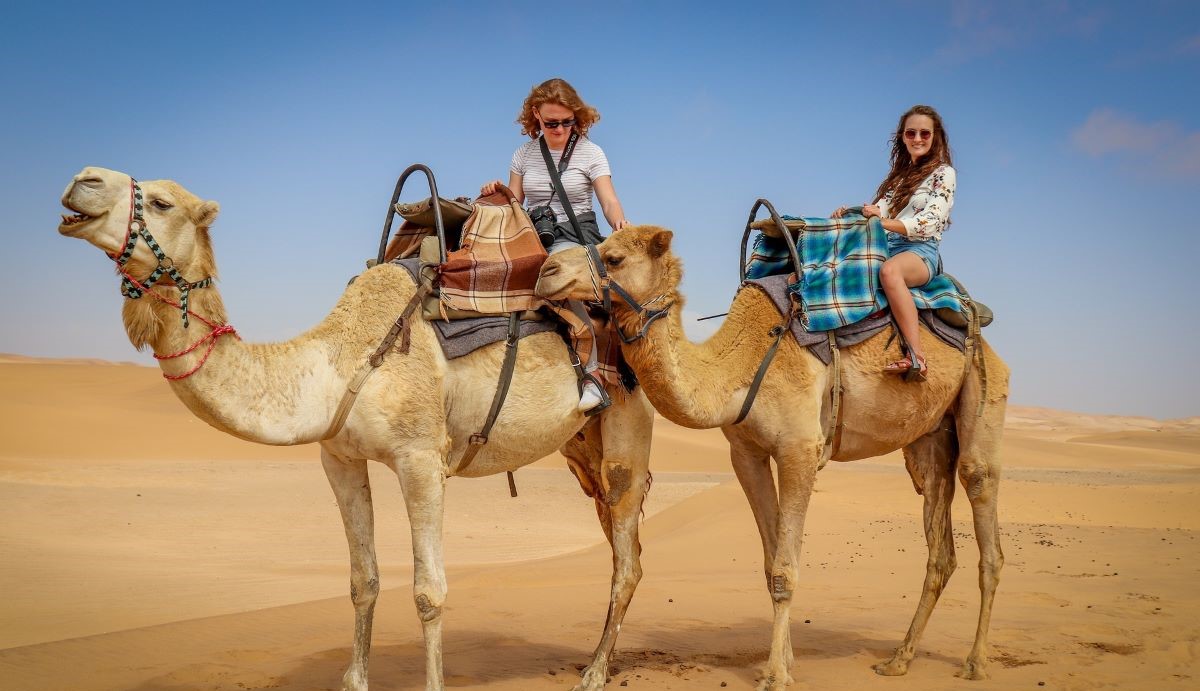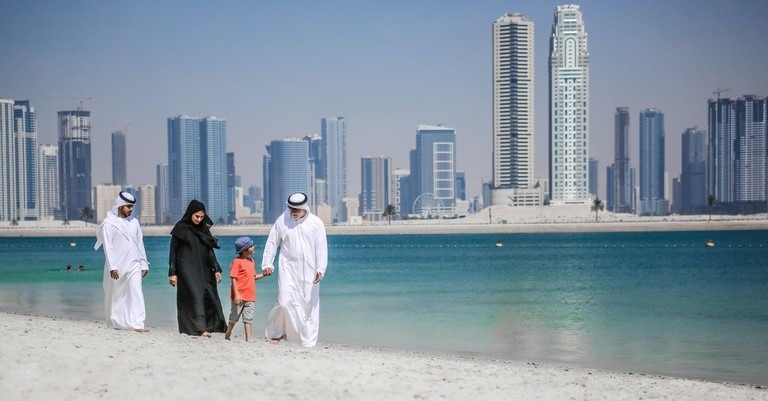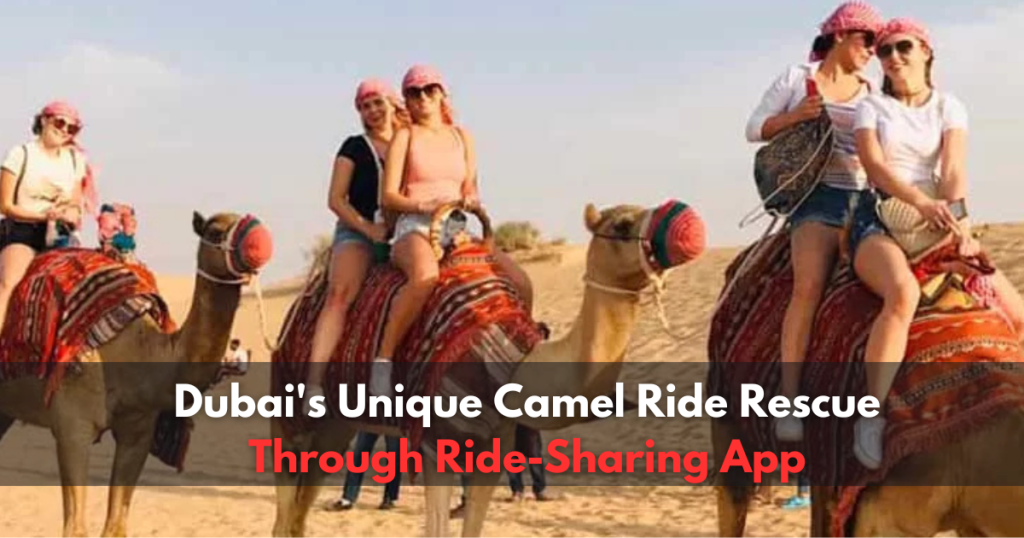Dubai has a futuristic skyline, luxury shopping, and a diverse culture. It is also known for its rich Arabian heritage. Among the iconic symbols of this heritage is the camel. It is a traditional companion of the desert-dwelling Bedouins.
It is part of the region’s history. Recently, the city took a bold step. It launched a camel ride-sharing service to rescue stranded camels in the vast desert. The service blends modern technology with tradition. This blend of technology and heritage shows Dubai’s progressive spirit. It offers a new solution to an old problem.
Dubai has recently blended innovation with tradition. A camel rescue ride-sharing app shows this. Dubai’s unique way of rescuing distressed camels in the desert has drawn global attention. It is both inventive and responsive to cultural and environmental needs.
This article explores a unique service. It covers its importance, how it works, and its future. It emphasizes Dubai’s lead in blending smart solutions with tradition.
The Need for Camel Ride Rescue Services

Camels, or “ships of the desert,” are crucial to the Arabian Peninsula’s identity. But these resilient animals can face tough conditions, especially in Dubai’s harsh desert.
Stranded Camels and the Desert Environment
Camels can wander far from known areas. They may then become stranded without enough food or water. Camels can survive extreme heat. Yet, prolonged exposure can dehydrate them, cause heat stroke, or even kill them.
Human Impact on Camel Safety
As Dubai’s urban landscape expands, camel habitats and grazing areas shrink. This raises the risk of camels straying into danger or getting lost in the urban outskirts. We must keep them safe. It’s vital for animal welfare and the cultural symbols they represent.
How Camel Ride Rescue Works in Dubai

The camel rescue service is a ride-sharing model. It has adaptations to cater to camels’ needs. The app lets camel owners or travelers request help for distressed camels, like a ride-sharing app.
The Request Process
The app allows users to make rapid requests for camel rescue. They do this by inputting the animal’s approximate location. Once the team logs the request, they dispatch a group of rescuers to the location. They equip themselves with camel transport vehicles.
Camel Transport and Rehabilitation
Rescued camels are safely transported to camel rehabilitation centers. There, they get medical assessments, hydration, and shelter. The goal is to rescue camels and restore their health. Then, they can be reunited with their owners.
The Role of Technology: App Development and Features

The app’s development required a mix of ride-sharing tech and maps for desert terrain. Here are some key features of the camel ride rescue app:
Desert Mapping and GPS
Desert mapping, unlike urban mapping, has unique challenges. Its vast, unmarked areas make it hard to map. The app uses GPS to pinpoint the camel’s location. This helps rescuers find camels quickly.
Animal Identification and Tracking
The app lets users log the camels’ color, size, and condition. This helps rescuers prepare for transport. Rescued camels get temporary tracking devices. This monitors their recovery and ensures a safe return to their owners.
Integration with Dubai’s Animal Welfare Services
The camel rescue app links to Dubai’s animal welfare database. This speeds up intervention. The system can store camels’ medical records. This lets vets quickly address any recurring health issues.
Benefits of the Camel Ride Rescue Service

The camel ride-sharing rescue app is amazing. It uses technology to meet a traditional need. Here’s how it benefits Dubai:
Enhanced Camel Welfare
The service makes camel rescue quick and easy. It reduces the chance of stranded camels suffering for too long. This humane approach shows Dubai’s commitment to animal welfare, even in tough conditions.
Promotion of Sustainable Tourism
Dubai’s tourism thrives on its blend of modernity and heritage. The app protects camels. This enhances tourists’ desert experiences. They can see camels thriving in nature. This sustainable approach supports Dubai’s tourism goals. It will have a minimal impact on wildlife.
Improved local economy
Camel farming and tourism are integral to Dubai’s economy. The camel ride rescue app helps these sectors. It prevents harm to camels and keeps them from getting lost. This supports camel owners and workers who rely on camels for cultural tours and races.
Challenges and Solutions in Camel Rescue Operations

While the camel ride rescue service is innovative, it also faces several challenges. Here’s how Dubai tackles them:
GPS Limitations in Desert Terrain
GPS technology is not always reliable in vast deserts. There is limited infrastructure there. To address this, Dubai is developing a hybrid system. It will combine GPS and drone tech to enable aerial surveys when signals are weak or spotty.
High Operational Costs
Desert rescue operations are costly due to fuel, vehicle maintenance, and personnel. To cut costs, Dubai seeks partnerships with local firms. It is also exploring eco-friendly transport, such as solar-powered vehicles.
Ensuring Proper Camel Care
Once a camel is rescued, it’s crucial to provide immediate medical care. Dubai partners with veterinarians specializing in camels. This creates a network of professionals who can quickly respond to health issues. It ensures rescued camels receive timely, quality care.
Impact on Dubai’s tourism and heritage

The camel ride-sharing rescue service does more than solve problems. It boosts Dubai’s tourism and preserves its cultural heritage.
Attracting International Attention
Dubai’s camel rescue efforts have attracted tourists and animal welfare groups worldwide. They show a modern commitment to the welfare of a regionally significant animal. They create a new attraction for global travelers.
Strengthening Cultural Pride
The camel ride rescue service boosts local pride in Dubai’s heritage. It shows that modern solutions can protect traditional symbols. The service keeps the resilient camel central to Dubai’s identity.
Boosting Eco-Tourism
Dubai’s tech protects desert wildlife. It supports eco-tourism. Sustainable visitors are drawn to Dubai. Their tourism dollars support desert life, including camels.
Future of Ride-Sharing Services for Desert Wildlife and Livestock

Dubai’s camel ride rescue app could pave the way for other animal welfare solutions across the globe. Here are some potential future applications:
Expansion to Other Desert Animals
The camel rescue could expand to help other desert animals, like oryxes and gazelles. Dubai can boost its wildlife conservation image. It should create rescue programs for diverse species.
Global Adoption of Desert Rescue Technology
Arid countries with vast deserts, like Saudi Arabia and Egypt, could use Dubai’s model to support their wildlife and livestock. By exporting its technology and expertise, Dubai could help improve global animal welfare.
Integration with Autonomous Vehicles
As technology advances, Dubai’s camel rescue service could use drones or self-driving vehicles. These vehicles could patrol the desert. They would quickly find and assess stranded animals. This would reduce the need for human help and cut costs.
Conclusion
Dubai’s unique camel ride-sharing rescue service shows its innovative spirit. It merges tradition and technology for a good cause. This initiative protects camels. It shows Dubai’s commitment to its cultural heritage, animal welfare, and sustainable tourism. Dubai’s camel ride-sharing app shows its vision. It seeks a future where modern tech honors its rich Arabian past.


